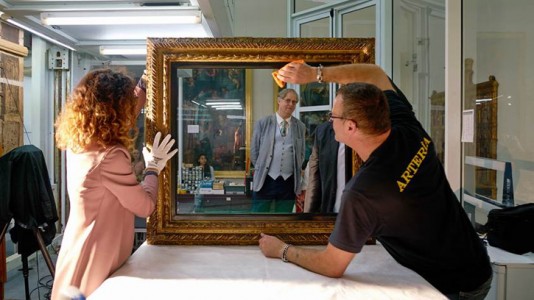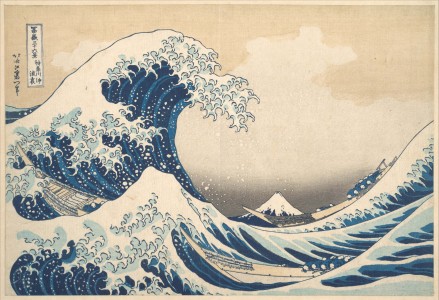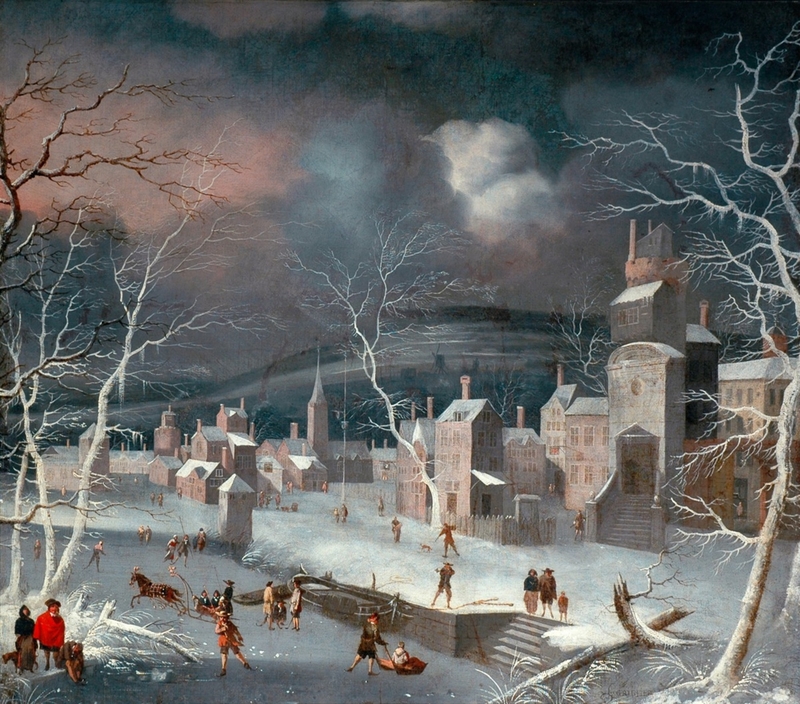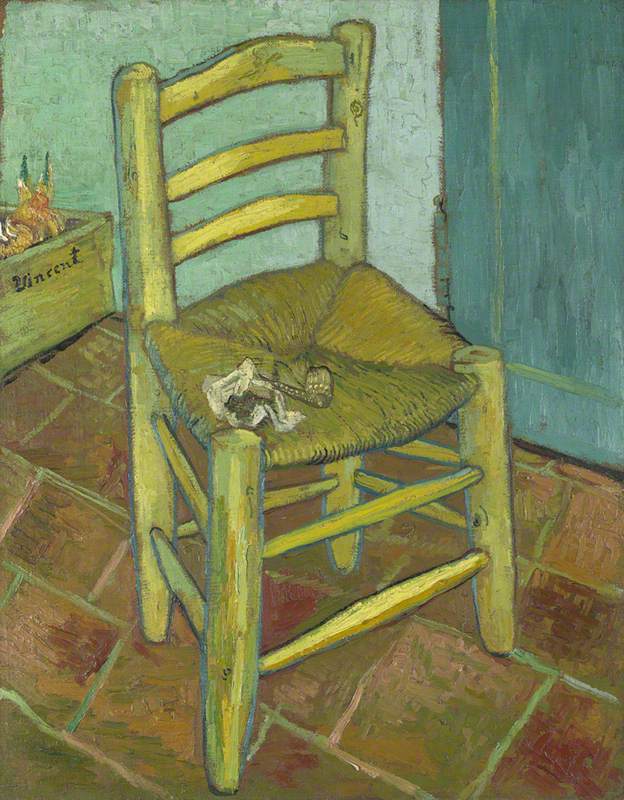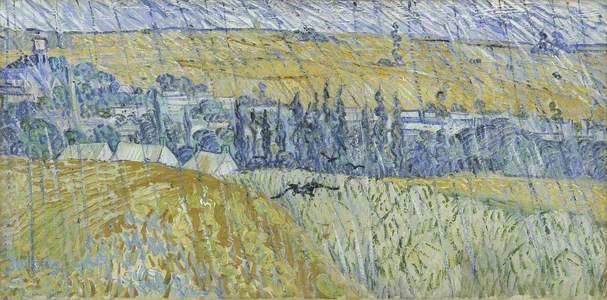When Vincent van Gogh was released from the asylum in Saint-Rémy-de-Provence in 1890, where he had been admitted following his bouts of illness and the incident with the ear, he decided that he wanted return to the north of France in order to be, once again, closer to his brother Theo. Because he did not want to move back to Paris it was decided that he would settle in Auvers-sur-Oise, a small artists’ town, where a friend of the family, Dr Gachet would take care of him. Van Gogh was to live in Auvers for the last 70 days of his life before he died on 29th July 1890 from the pistol shot that he had inflicted upon himself two days earlier. Those last days were exceptionally productive for Van Gogh; in that short period he produced more than 70 paintings.
The most striking group of works from that period is a series of paintings with a pronounced horizontal format, the so-called double squares. This format was most likely inspired by the panormic works of the French painter Charles Daubigny, whom Van Gogh greatly admired and who had had a studio in Auvers. Wheatfield with Crows (Van Gogh Museum, Amsterdam; Vincent van Gogh Foundation) is perhaps the most famous of these paintings. Because of the motif of the wheatfield – Van Gogh eventually shot himself in a wheatfield – the dark sky and the ominous crows flying over the field, it has often been assumed that this was his last painting. More recent research has shown, however, that in fact Tree Roots (Van Gogh Museum, Amsterdam; Vincent van Gogh Foundation) from the same oblong series was his last painting.
The Van Gogh Museum has four of the 12 paintings from this series in its collection. One painting from this series that has always struck me for its motif and painterly execution is Rain, Auvers painted in July 1890, that is now at the National Museum in Cardiff. In this painting Van Gogh shows a view of Auvers, nestled between trees and the rolling field surrounding it. As in so many other works Van Gogh plays with his characteristic blue-yellow contrast, with the blueish town surrounded by the trees, and the sky above forming horizontal bands across the picture plane that alternate with the yellow zones of the surrounding fields. The most striking features of the painting, however, are the thin strokes that cut across the picture in vertical lines, representing the pouring rain. With this motif Van Gogh reaches back to Hiroshige’s famous woodcut print of the Bridge in the Rain. Van Gogh not only owned this print – he and his brother Theo had actively collected Japanese woodcut prints – but he had also copied it in an oil painting when he lived in Paris. The representation of the rain is very similar in Rain, Auvers. The thin lines are drawn across the painting’s surface, almost forming a veil across the picture plane. The graphic depiction of the rain is in contrast with the painterly execution of the landscape. I would like to show this painting, as one of his last, as it not only combines a motif of Van Gogh’s reality at that moment, a view of the village of Auvers, with a memory of an earlier motif from Japanese art, but also shows Van Gogh’s masterful handling of the brush, ranging from his thick and dynamic brushstrokes to the almost draughtman-like delicate depiction of the rain.
Axel Rüger, Director of the Van Gogh Museum, Amsterdam





